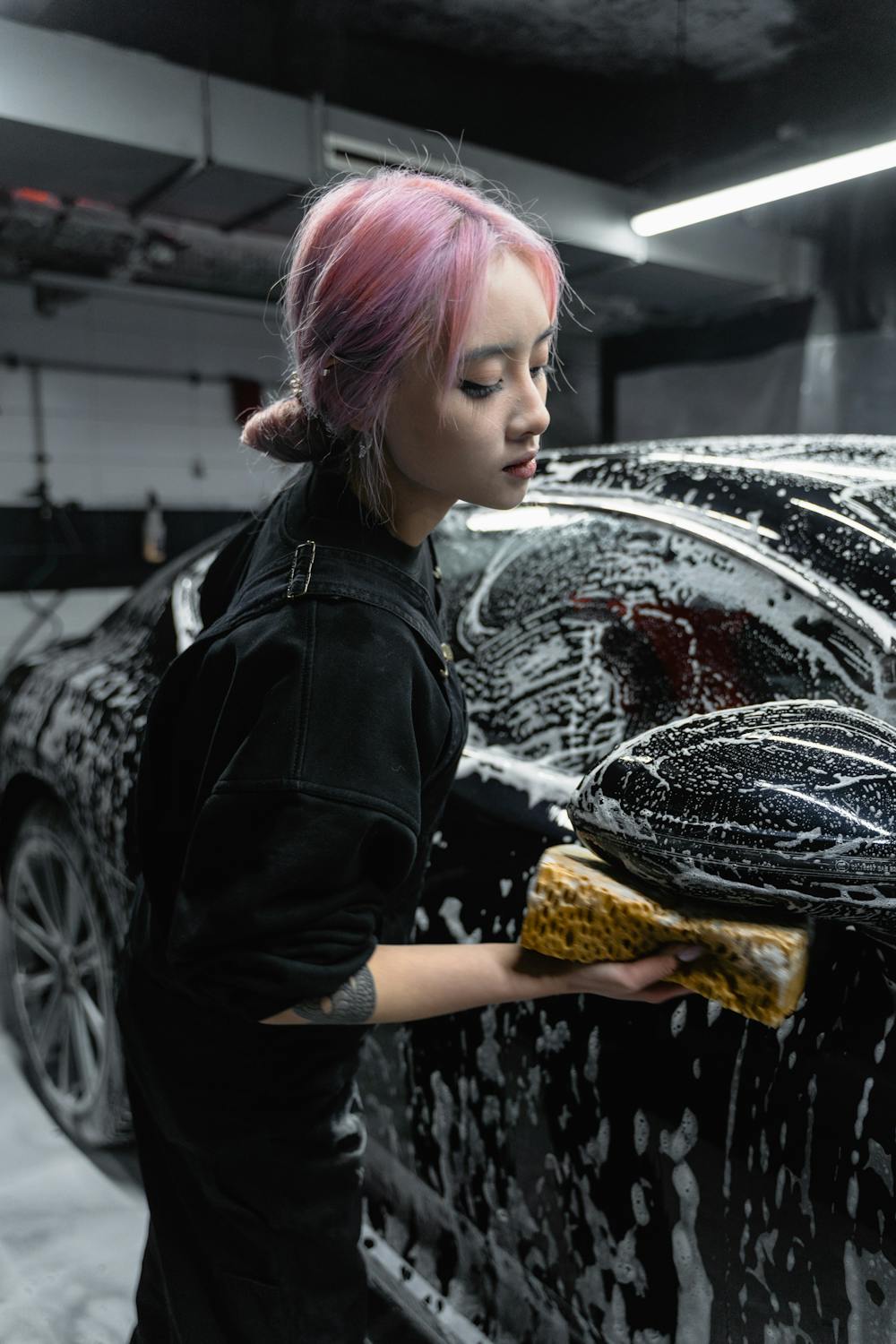Can You Apply Ceramic Coating Over Existing Wax?

Can You Apply Ceramic Coating Over Existing Wax?

The Short Answer
No, you should not apply ceramic coating over existing wax or sealant. For proper adhesion and longevity, ceramic coatings need to bond directly with the clear coat of your vehicle's paint, not with any product sitting on top of it.
Why Ceramic Coatings and Wax Don't Mix
Chemical Incompatibility
Ceramic coatings and carnauba waxes or synthetic sealants have fundamentally different chemical compositions:
- Ceramic Coatings: Contain silicon dioxide (SiO2) and/or titanium dioxide (TiO2) that form covalent bonds with the clear coat
- Carnauba Wax: Contains natural carnauba palm tree wax that sits on top of the paint
- Synthetic Sealants: Typically contain polymers that form a protective layer but don't bond at a molecular level
When you try to apply ceramic coating over wax, the coating cannot reach the clear coat to form the necessary chemical bonds. This results in poor adhesion, uneven application, and dramatically reduced durability.
The Science Behind It
Ceramic coatings work through a process called cross-linking, where the SiO2 molecules form a lattice structure directly with the clear coat. This cross-linking requires a perfectly clean surface at a microscopic level. Any contaminant—including wax—will prevent this bonding process from occurring properly.
What Happens If You Try
If you attempt to apply ceramic coating over wax, you might experience:
-
Immediate Issues:
- Streaking and high spots
- Uneven appearance
- Difficulty buffing the coating
- Cloudy or hazy finish
-
Long-term Problems:
- Premature failure of the coating
- Peeling or flaking
- Significantly reduced durability (weeks instead of years)
- Wasted product and effort
The Proper Application Sequence
To achieve optimal results with ceramic coating, follow this preparation sequence:
1. Wash
Start with a thorough washing to remove surface contaminants:
- Use a pH-neutral car shampoo
- Avoid wash and wax products
- Use the two-bucket method to prevent swirl marks
- Rinse thoroughly
2. Decontaminate
Remove bonded contaminants from the paint surface:
- Use an iron remover to dissolve embedded metal particles
- Apply a clay bar or clay mitt with proper lubricant
- Re-wash the vehicle after claying
3. Remove Existing Products
This is the critical step to ensure no wax remains:
- Wash with a wax-stripping shampoo specifically designed to remove existing products
- Alternatively, prepare a mixture of isopropyl alcohol (IPA) and water (1:1 ratio)
- Wipe down all surfaces with the IPA solution using a clean microfiber towel
- Pay special attention to seams, gaps, and hard-to-reach areas where wax may hide
4. Polish (Optional but Recommended)
Polishing serves two purposes: removing minor imperfections and ensuring absolutely no wax remains:
- Use a fine polish with a dual-action polisher
- Work panel by panel with a finishing pad
- This step will remove the last traces of any wax or sealant
- Polishing also creates the ideal surface for ceramic coating adhesion
5. Panel Wipe
After polishing, perform a final cleaning to remove any oils or residues:
- Use a dedicated panel wipe product or IPA solution (70% IPA, 30% distilled water)
- Spray onto a clean microfiber towel and wipe each panel
- Change towels frequently to avoid cross-contamination
- This step ensures a perfectly clean surface at the molecular level
6. Apply Ceramic Coating
Now that the surface is completely clean, you can apply the ceramic coating:
- Work in a controlled environment (ideally 60-75°F with 40-60% humidity)
- Follow the manufacturer's specific instructions
- Apply to small sections at a time (typically 2' x 2')
- Level immediately with a clean microfiber towel
- Allow proper curing time before exposure to water or chemicals
Can You Apply Wax Over Ceramic Coating?
While you shouldn't apply ceramic coating over wax, the reverse question is also common. Can you apply wax over a ceramic coating?
Yes, but with caveats:
- You can apply wax over a fully cured ceramic coating
- The wax won't bond as well or last as long as it would on bare paint
- The additional protection is generally unnecessary
- Some detailers apply wax over ceramic for enhanced gloss on show cars
- Use spray waxes rather than paste waxes for easier application
- The wax will wear off much sooner than the coating underneath
Better Alternatives to Wax Over Ceramic
Instead of traditional wax, consider these options for maintaining a ceramic coated vehicle:
- Ceramic Boosters: Spray products with SiO2 that complement the existing coating
- Ceramic Maintenance Sprays: Specifically formulated to maintain ceramic coated surfaces
- Ceramic Detailers: Quick detailers with ceramic properties for touch-ups
These products are designed to work with ceramic coatings rather than competing with them.
Professional vs. DIY Considerations
If you're not confident in your ability to completely remove existing wax:
- Consider professional installation where they use professional-grade surface preparation products
- Professionals have tools to verify that all wax has been removed before coating
- The additional cost of professional installation is often worth it for the improved longevity
Conclusion
Applying ceramic coating over wax is a recipe for disappointment and wasted time and money. The key to successful ceramic coating application is meticulous surface preparation with a complete removal of all previous products. Follow the proper sequence—wash, decontaminate, strip existing products, polish, panel wipe, then coat—for the best possible results and years of protection.
Remember that ceramic coatings represent a significant investment in your vehicle's appearance and protection. Don't compromise their performance by cutting corners during the preparation phase.
About the Author

David Rodriguez
David owns a high-end detailing shop in California and has worked with luxury and exotic vehicles for over a decade. He's a specialist in ceramic coating applications.
Related Articles
Related Articles

Addressing Common Issues Post-Application
November 2, 2023

Removing Ceramic Coating: A How-To Guide
October 15, 2023

How Weather Affects Ceramic Coating Performance
January 5, 2024